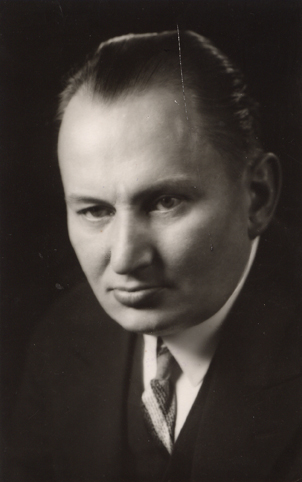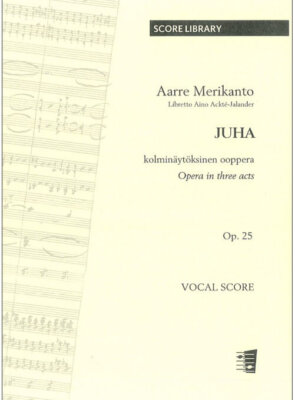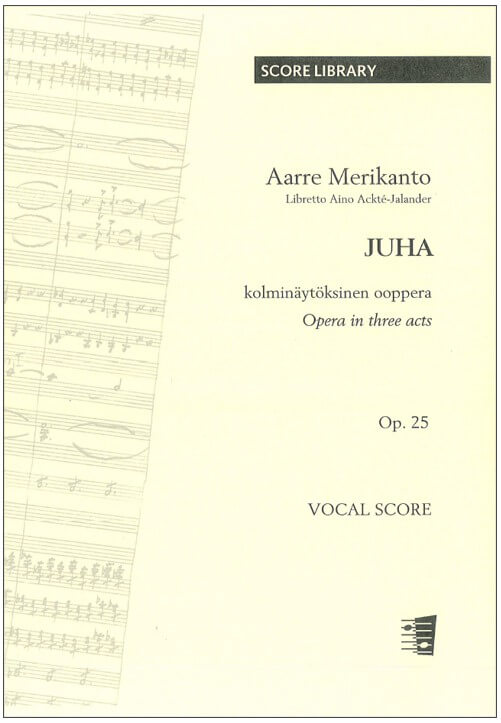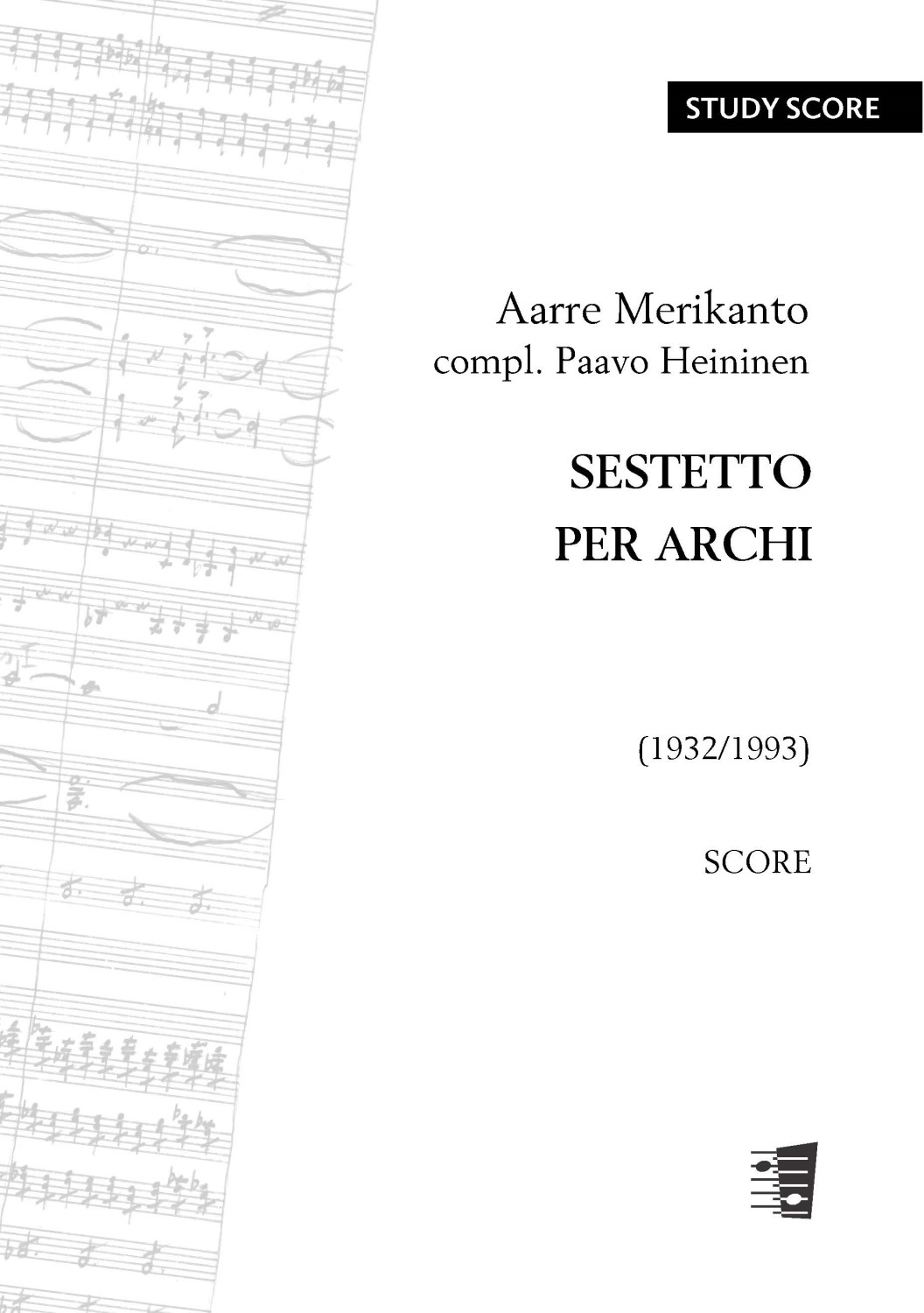
Merikanto, Aarre
Aarre Merikanto (29.6.1893-28.9.1958) was a composer and teacher and the son of Oskar Merikanto. He studied composition at the Helsinki Music Institute (later Sibelius Academy) with Erkki Melartin, completing his studies at the Leipzig Conservatory with Max Reger (1912–14) and at the Moscow Conservatory with Sergei Vasilenko (1915–16). Merikanto was teacher at the Sibelius Academy where he was later appointed Professor of Composition. Most Finnish composers born between the world wars were students of his, and his influence was strongly felt.
Aarre Merikanto’s father was a celebrated organist and composer, and musical training was given at home from a young age. Merikanto wrote his first works during his teenage years. In Leipzig he continued his studies in counterpoint and in Moscow he heard Skrjabin’s music and was greatly influenced by its harmony and tone colours. His own musical language possessed initially a strong attachment to modernism and was influenced by chromatic polyphony, Russian mysticism and the rhythms of Finnish folk dance. His output divides into three stylistic periods: modernist (1921–33), national Romantic (1934–50) and a synthesis of both (1951–58).
Merikanto’s most significant creative period was in the 1920s, when he produced many notable works and gained some international success. His style of this time was a blend of late Romantic, Impressionist and Expressionist elements, with a greater rhythmic complexity and harmonic chromaticism than the Sibelian tradition of the time. It met with bewilderment in Finland, and his music was largely passed over in silence as Merikanto’s contemporaries were working in strictly tonal idioms, and his Central European modernist style was unusual in Finland. Some works of this period began to be appreciated and performed only in the late 1950s and 60s.
Merikanto changed his style radically in the mid-1930s, and Kyllikin ryöstö (The Abduction of Kyllikki, 1934) is the turning-point between his modernist and national Romantic periods. The reasons for the stylistic change were connected with the cool reception accorded to his previous works, the general change in cultural atmosphere, and Merikanto’s declining health. In the 1940s Merikanto composed mainly small-scale music but later developed a new interest in composition after being appointed as Professor of Composition at the Sibelius Academy. At the time he wrote his Third Piano Concerto (1955).
Fennica Gehrman has published the central works by Aarre Merikanto, including the famous “Schott” Concerto for violin, clarinet, horn and string sextet (1924), Pan (1924), Nonet (1926) and Ten Pieces for Orchestra (1930).
Andante
(1956)
for string orchestra
str
Duration: 3
Concerto for violin, clarinet, horn and str sextet
Schott Concerto (1924)
solo vl-cl-hn-str(20220)
Duration: 18
Concerto No. 2 for Violin and Orchestra
(1925)
32(II=c.ing)32-4100-cel-2hp-str
Duration: 16
Concerto No. 3 for Piano and Orchestra
(1955)
2(2.+picc)222-2211-10-str
Duration: 18
Ekho [Echo]
(1922)
3[3.+Picc]3[3.=EnHn]4[4.=BCl]3[3.=CFg]—4331—12[BDr/Tri/TuBells/Cyms/TamT/Glsp]-Cel-2Hp—str
Duration: 8
Fantasia for orchestra / Fantasia orkesterille
(1923)
4(I+picc.II+picc.III+picc.IV+picc).4(III=c.ing.IV+c.ing)4(IV+clb).4(IV=cfg)-6.4.3.2-2.2(Gran cassa, Piatti, Triangolo, Campanelli, Tam-tam)-2hp-cel-str
Duration: 17
Interlude from the opera Juha (III näytös)
for orchestra
3(I, II, III+picc)3(III=ca)3(III=bcl)2-4331-banda-13-hp-cel-str Banda: Bass trombone, Tuba, Campane Percussione: Tamburo, Gran cassa, Piatti, Tam-tam, Glockenspiel, Triangolo, Tamburino
Duration: 10
Intrada
(1936)
for orchestra
2(II=picc)222-3220-str
Duration: 8
Juha
Juhan monologi "Että saatoit sen sanoa" (1920-22)
for baritone and orchestra
33(III=ca)3(III=bcl)2-4331-11-hp-cel-str
Duration: 4
Juha
kolminäytöksinen ooppera (1920-22)
opera in three acts
3(I, II, III+picc)3(III=ca)3(III=bcl)2-4331-banda-13-hp-cel-str Banda: Bass trombone, Tuba, Campane Percussione: Tamburo, Gran cassa, Piatti, Tam-tam, Glockenspiel, Triangolo, Tamburino
Duration: 108
Konzertstück for Cello and Chamber Orchestra
(1926)
1010-0000-hp-str (no double basses)
Duration: 13
Largo misterioso
No. 1 from Ten Pieces for Orchestra (1927)
for chamber orchestra
1110-0100-pf-harm-str
Duration: 4
Largo misterioso (Crepuscolo)
No. 2 from Partita per orchestra (1927/1931)
for orchestra
Composer's own arrangement of No. 1 of Ten Pieces for orchestra 22(II=ca)20-1200-pf/cel-str
Duration: 4
Nonetto
(1925-26)
for instrumental ensemble
11(==c.ing)10-0000-pf-str(11111)
Duration: 19
Notturno
(1929)
for orchestra
3332-4000-str
Duration: 10
Pan
(1924)
for orchestra
3(III+picc)3(III=ca)3(III=bcl)2-4130-13-2hp-cel-str(88654)
Duration: 12
Savannah-la-Mar
(1914-15)
for soprano and orchestra
3(III=picc)222-4331-11-hp-str Percussione: Piatti, Tamtam
Duration: 8
String Sextet [SALES MATERIAL ISMN 9790550115286]
completed by Paavo Heininen (1932 rev 1993)
2vn/2va/2vc
Duration: 22
Symphonic Study / Sinfoninen harjoitelma
(1928)
for orchestra
3333-4331-str
Duration: 18
Syyssonetti / Autumn Sonnet
(1922)
for soprano and orchestra
32(I=opt.ca;II=ca)4(IV=bcl)3(III=cfg)-4331-12-2hp-cel-str Percussione: Piatti, Tamtam
Duration: 4
Talviset tilhet / Sidensvansar
Northern Waxwings in Winter (1950)
for medium voice and orchestra
1100-2000-str
Duration: 2
Ten Pieces for Orchestra
Kymmenen kappaletta orkesterille (1930)
1110-0110-10-pf-harm-str 1. Largo misterioso 4’ (1110-0100-pf-harm-str) 2. Molto andante e serioso 2’ (ob-str) 3. Allegro scherzando 1’ (cl-str) 4. Largo con espressione 2’ (vl-vc-pf) 5. Lento spianato 1’ (fl-str) 6. Allegro moderato 1’ (vl-pf-harm) 7. Andante sognante 3’ (fl-ob-cl-pf-harm-vla) 8. Grave 3’ (str) 9. Risoluto 2’ (vc-harm) 10. Vivace giocoso 2’ (1110-0110-10-pf-harm-str)
Duration: 21
The Abduction of Kyllikki / Kyllikin ryöstö
(1935)
for orchestra
3232-3230-01-pf-str
Duration: 15
Valvotko kaukana siellä / Vakar du än långt borta
Are You Watchful There Far Away? (1951)
for medium voice and orchestra
1112-2000-str
Duration: 2
Veräjäpuu [arr. Karjalainen]
for voice and orchestra
1.1.1.0-0.0.0.0-str
Duration: 3




